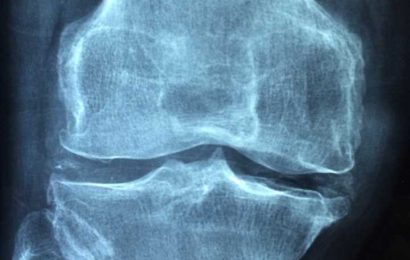
Thanks to Science, bionic robots made from fully prosthetic limbs are now possible. We’ve come long from a pure Sci-Fi standpoint in The Six Million Dollar Man to the present age where limbs can be replaced with fully-functional bionic ones.
Kinesthesia/proprioception refers to the awareness of the brain to identify movement and positioning of one’s body parts. For quite a long time, limbs could easily get replaced. However, the new limbs could never match up to the real thing due to the lack of a sense of feel. Normally, whenever we move any part of our bodies, say our hands, the brain’s sensorimotor signals inform the brain about the where and how the movement occurs. Prosthetic limbs of days gone past did not facilitate this sense of awareness, thankfully, new age technology is here to save the day.

Thanks to advances in technology, what was previously fabled as Sci-Fi is now made possible thanks to AI
All humans possess a sixth sense embedded in the way they function. This sixth sense is referred to as kinesthesia. It’s a bit different from the sense of touch. It’s what allows us to catch falling objects with precision. This sixth sense also allows us to perform multitasking activities on both hands whilst being on top of things. It is an important quality to have if one wishes to achieve complex motor tasks.
Watch & Learn
With technology, we’ve been able to develop prosthetic hands that are eons ahead of previous releases. Even with the most sophisticated of prosthetics though, it’s a bit hard to tell whether it will provide kinesthetic feedback. The best way to ascertain their status is by simply watching and learning.
For an amputee, opening a door is not a simple mundane activity once they get fitted with prosthetics for the first time. There are a couple of stages involved. The first thing they see is a door handle. Then, they reach for the door handle; the prosthetics grasp the handle, and then finally, pull/push the handle.

Bionic Limbs are quite essential in getting amputees back on the mend
Recently, researchers have made a breakthrough. In the latest issue of Science Translational Medicine, scientists go to lengths in explaining their most recent discovery of a neural interface able to mimic kinesthetic feedback through a prosthesis. This breakthrough is allowing amputees to have full control of their robotic hands and ably perceive intricate movements like wrapping fingers around objects.
The process works thanks to the induction of kinesthetic illusions by vibrations. Tendons are vibrated at frequencies of 70-115Hz and in turn, the brain gets to feel as though the associated joint is moving. These illusions are not limited to a single joint, they can involve multiple joints.
Illusions of Grip
With the brain fully convinced that the missing limbs are still present, the bionic arms can have a real feel to their functioning, something previously thought as unimaginable.
The researchers combined the perception and intention of hand movement to come up with the system. They did this by developing a bidirectional neural-machine interface. This interface was able to relay electric signals from the muscles to the bionic hands.
The kinesthetic illusion was able to be achieved thanks to the introduction of a kinesthetic feedback signal. Test subjects would think about moving an arm and the hand would move. Doing so lead to the triggering of vibrations at the re-innervation sites and voila! Kinesthesia was possible.
The AI Concepts

Integration of AI in society will enhance numerous fields like medicine, manufacturing, and military operations
The introduction of artificial intelligence concepts in medicine has been of great benefit to physicians worldwide. AI is able to build upon concepts like machine learning so that the longer amputees spend time with their bionic limbs, the better they are able to control them. It’s the same concept as a young kid making the first steps and learning how to walk. Once a pattern is established and balance found, the bionic arms soon start feeling as if they’ve always been part of us.
The bionic arms powered by AI are bound to change the future as we know it too. In the military ranks, activities like bomb disposal are now being suggested to employ the efficiency of a robotic arm. This is a recommendation passed by Darpa’s Revolutionizing Prosthetics program. Indeed, such applications could help save lives.
Source: Read Full Article


